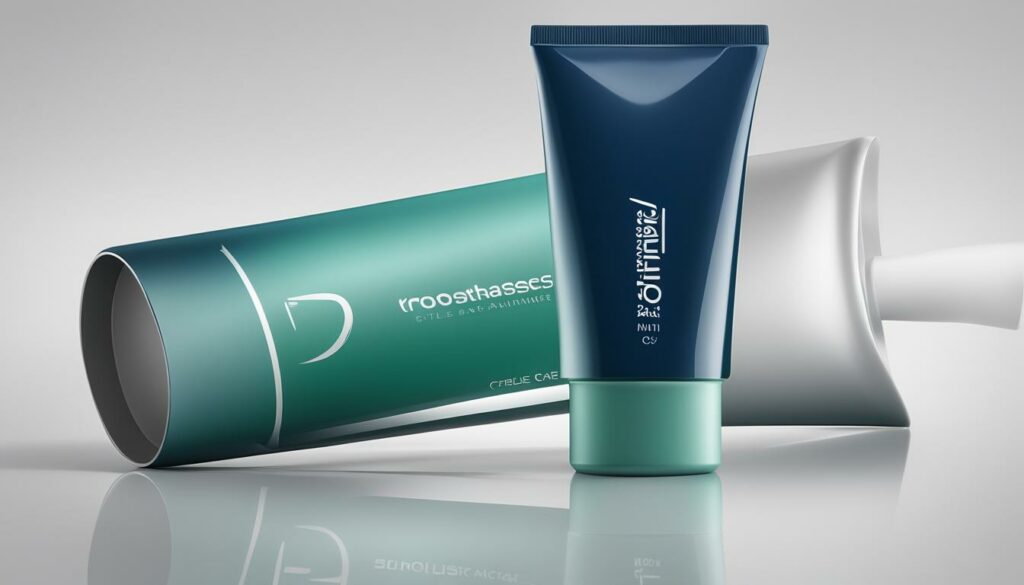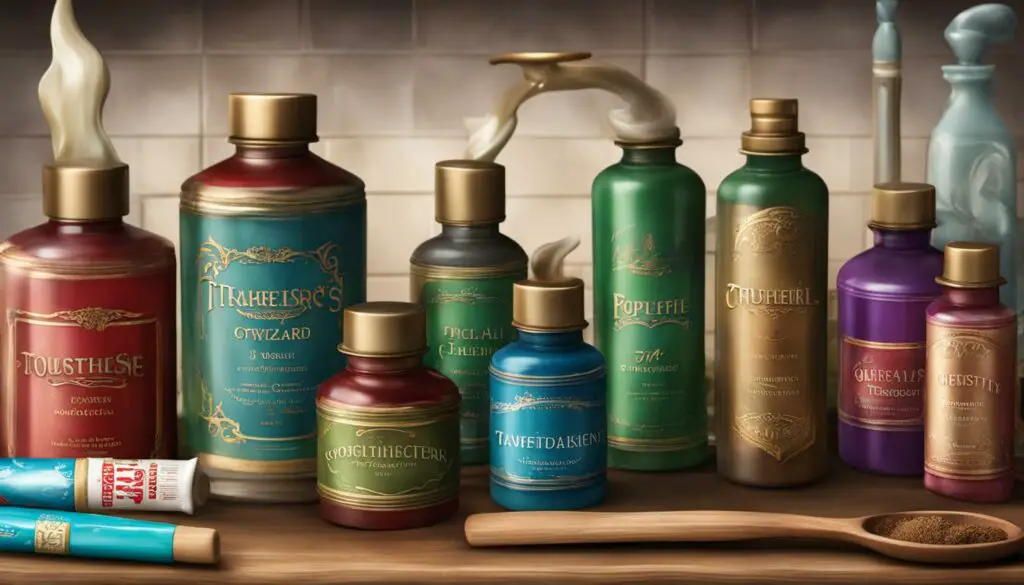Ancient Egyptian civilization is often revered for its remarkable achievements in art, architecture, and culture. However, one lesser-known invention that originated in ancient Egypt is toothpaste. Dating back to around 5000 BC, the ancient Egyptians were among the first people to use substances specifically designed to clean their teeth and maintain oral hygiene.
Their toothpaste, although different from the modern-day version, served the same purpose of keeping teeth and gums clean, freshening breath, and even whitening teeth. The ancient Egyptians concocted a paste using burnt eggshells, ox’s hooves powder, and ashes, which they would then rub on their teeth and gums.
This remarkable innovation laid the foundation for dental care practices in ancient civilizations and marked the beginning of a long and fascinating journey in toothpaste development.
Evolution of Toothpaste Ingredients in Ancient Civilizations
In addition to the Egyptians, other ancient civilizations such as the Greeks, Romans, Indians, and Chinese also utilized toothpaste in their oral hygiene practices. These civilizations recognized the importance of maintaining good dental health and sought to create their own remedies for oral care.
The Greeks, for instance, developed a toothpaste that consisted of crushed bones and oyster shells. This abrasive mixture served as a means to clean and polish their teeth. Similarly, the Romans incorporated powdered charcoal and bark into their toothpaste, not only for cleansing purposes but also to add flavor.
Meanwhile, the Indians and Chinese embraced a holistic approach to dental care by utilizing various natural ingredients. The Indians used salt, herbal mints, and ginseng in their toothpaste formulations, which not only aided in cleaning the teeth but also provided medicinal benefits. The Chinese, on the other hand, created toothpaste remedies that combined salt with herbal extracts, such as mint and ginseng, to freshen breath and promote oral health.
While these ancient toothpastes differed in composition and ingredients, their shared goal was to promote oral hygiene, freshen breath, and maintain healthy teeth and gums. These early practices and ingredients laid the foundation for the development of modern toothpaste as we know it today.
The Evolution of Toothpaste Ingredients in Ancient Civilizations
| Ancient Civilizations | Common Ingredients |
|---|---|
| Greeks | Crushed bones, oyster shells |
| Romans | Powdered charcoal, bark |
| Indians | Salt, herbal mints, ginseng |
| Chinese | Salt, herbal extracts (mint, ginseng) |
These early toothpaste ingredients, along with the ancient Egyptian remedies, showcased the ancient civilizations’ understanding and importance of oral health. Through experimentation and innovation, they paved the way for the advancements in toothpaste seen throughout history.
Development of Modern Toothpaste
The modern form of toothpaste that we are familiar with today was first developed in the 1850s and was known as Crème Dentifrice. It was sold in jars. It wasn’t until the 1890s that Colgate introduced the tube, which is the packaging that toothpaste is still sold in today. This innovation made toothpaste more convenient and accessible.
| Year | Development |
|---|---|
| 1850s | Development of Crème Dentifrice, sold in jars |
| 1890s | Introduction of the toothpaste tube by Colgate |
With the introduction of the toothpaste tube, consumers no longer had to scoop out toothpaste from a jar, but could instead easily squeeze the desired amount onto their toothbrushes. This simple yet innovative packaging revolutionized the way toothpaste was used and made it more hygienic and travel-friendly.

History of Toothpaste Innovation
Over the years, toothpaste has undergone numerous advancements and innovations. These advancements have significantly improved oral health and revolutionized dental care practices.
Introduction of Fluoride Toothpaste
In 1914, toothpastes with fluoride were introduced, marking a significant milestone in oral hygiene. Fluoride is a mineral that helps fight cavities and strengthen tooth enamel. The inclusion of fluoride in toothpaste formulations has played a crucial role in preventing tooth decay and improving overall oral health.
Specialized Toothpastes for Specific Dental Needs
In the second half of the twentieth century, toothpaste became more standardized, and various specialized toothpastes were developed to cater to specific dental needs.
One such innovation was the introduction of toothpaste for sensitive teeth. This type of toothpaste is specially formulated to provide relief for individuals with tooth sensitivity, reducing discomfort caused by hot or cold temperatures.
Furthermore, toothpaste for whitening purposes became popular among individuals seeking a brighter, more radiant smile. These whitening toothpastes contain mild abrasives and bleaching agents that help remove surface stains and restore the natural whiteness of teeth.
Additionally, toothpaste for smokers was developed to address the specific oral health concerns faced by individuals who smoke. This type of toothpaste is designed to combat tobacco stains, remove tobacco-related odors, and promote gum health.
Varied Flavors, Textures, and Formulations
Today, toothpaste is available in a wide range of flavors, textures, and formulations to meet different dental needs and personal preferences. From traditional mint flavors to more exotic options like cinnamon, bubblegum, and even chocolate, there is a toothpaste flavor to suit every individual’s taste.
Furthermore, toothpaste formulations have evolved to include natural and organic alternatives, catering to individuals who prefer eco-friendly and chemical-free dental care products.
Overall, the history of toothpaste innovation demonstrates the continuous drive for advancements in oral care. From the introduction of fluoride toothpaste to the development of specialized formulations, toothpaste has come a long way in improving oral health and hygiene practices.
| Advancements | Description |
|---|---|
| Fluoride toothpaste | Introduced in 1914, toothpaste with fluoride helps fight cavities and improves oral health. |
| Toothpaste for sensitive teeth | Specially formulated to provide relief for individuals with tooth sensitivity, reducing discomfort caused by hot or cold temperatures. |
| Whitening toothpaste | Contains mild abrasives and bleaching agents to remove surface stains and restore the natural whiteness of teeth. |
| Toothpaste for smokers | Developed to combat tobacco stains, remove tobacco-related odors, and promote gum health. |
| Wide range of flavors, textures, and formulations | From traditional mint flavors to natural and organic options, toothpaste caters to diverse preferences. |
Alternative Uses of Toothpaste
While toothpaste is primarily used for oral hygiene, it has also been discovered to have a wide range of alternative uses. Here are a few creative and surprising ways you can use toothpaste in your daily life:
Cleaning Alternative
Toothpaste can serve as a cost-effective substitute for abrasive cleansers when it comes to cleaning bathroom sinks and chrome fixtures. Its gentle abrasive properties help remove stains and grime, leaving your surfaces clean and shiny.
Moreover, toothpaste can effectively remove scuff marks from furniture, erase crayon marks from walls, and clean piano keys. Its mild abrasive texture allows for gentle but effective cleaning without causing damage or scratching.
Handy Deodorizer
After handling strong-smelling foods such as onions or garlic, the lingering odor can be quite unpleasant. However, toothpaste can come to the rescue. Simply apply a small amount to your hands, rub them together, and rinse. The toothpaste will help neutralize the odor, leaving your hands fresh and deodorized.
Mirror Defogger
Stepping out of a hot shower only to find a foggy bathroom mirror can be frustrating. But fear not! Toothpaste can aid in defogging your mirror. Apply a thin layer of toothpaste to the mirror, then wipe it clean with a soft, dry cloth. This simple trick will prevent your mirror from fogging up, ensuring clear visibility even after a steamy shower.
Unusual Moments in Toothpaste History
Throughout the history of toothpaste, there have been several intriguing and noteworthy moments that showcase the evolution and experimentation within the industry. From unconventional ingredients to unexpected changes, these unique episodes have contributed to the rich tapestry of toothpaste history.
The Soap-to-Sodium Lauryl Sulphate Transition
One unusual moment in toothpaste history occurred at the end of World War II. Prior to this period, toothpaste was commonly made with soap as a key ingredient. However, following the war, manufacturers made a significant shift by replacing soap with sodium lauryl sulphate. This change was driven by the desire to improve the cleaning and foaming properties of toothpaste, resulting in a formulation that was more effective in removing plaque and promoting oral health.

The Tooth Powder Dominance
While toothpaste is ubiquitous today, there was a time when tooth powder was the preferred oral hygiene product. Until the turn of the century, tooth powder enjoyed widespread popularity, offering individuals a different method for maintaining dental cleanliness. The use of tooth powder involved applying a fine powder to the teeth and gums, which would then be brushed or rubbed with a finger. Tooth powder often contained ingredients like baking soda, salt, and powdered herbs, providing a fresh and clean sensation.
The Odd Inclusion of Betel Nut
One particularly peculiar moment in toothpaste history occurred in the 1860s when toothpaste formulas included an unexpected ingredient – betel nut. Betel nut, also known as areca nut, is a seed derived from the Areca catechu palm tree. While its inclusion may seem strange, betel nut was believed to have oral health benefits, such as strengthening teeth and preventing tooth decay. However, prolonged use of betel nut can have detrimental side effects, including staining teeth and promoting addiction, leading to its eventual removal from toothpaste formulations.
These unusual moments in toothpaste history demonstrate the dynamic nature of oral care products and the willingness of manufacturers to experiment with ingredients and formulations to improve dental hygiene. By embracing innovation and responding to changing consumer needs, toothpaste continues to evolve, ensuring that we maintain healthy and beautiful smiles.
Notable Developments in Toothpaste Manufacturing
In the ever-evolving world of toothpaste manufacturing, several noteworthy developments have shaped the toothpaste industry and contributed to the wide variety of toothpastes available to consumers today. These innovations have brought about improvements in packaging, formulation, and consumer choice.
The Introduction of Toothpaste Tubes
One significant development in toothpaste manufacturing was the introduction of toothpaste tubes. This revolutionary packaging format was inspired by the packaging used for astronaut food. The use of toothpaste tubes brought convenience and ease of use to consumers, allowing for better control over the amount of toothpaste dispensed and minimizing wastage.
The Commercialization of Squeezable Tubes
Another interesting advancement in toothpaste manufacturing was the commercialization of squeezable tubes. This innovation replaced the traditional jar packaging and further improved the user experience. Squeezable tubes made it easier to extract the toothpaste, resulting in less mess and greater efficiency.
Flavored Toothpastes and Specialized Formulations
Toothpaste manufacturers have also responded to consumer preferences by introducing flavored toothpastes. Gone are the days of plain mint-flavored toothpaste as consumers can now choose from a wide range of flavors, including fruit, herbal, and even dessert-inspired options. Additionally, specialized toothpastes targeting specific dental needs have been developed, such as toothpaste for sensitive teeth, whitening toothpaste, and toothpaste for gum health.
| Advancements | Description |
|---|---|
| Toothpaste Tubes | Inspired by astronaut food packaging, toothpaste tubes provided convenience and better control over dispensing. |
| Squeezable Tubes | The commercialization of squeezable tubes replaced traditional jar packaging, offering ease of use and efficiency. |
| Flavored Toothpastes | Diverse flavors have been introduced, expanding consumer choices beyond traditional mint flavors. |
| Specialized Formulations | Toothpastes for specific needs, such as sensitivity and whitening, cater to different dental concerns. |
Conclusion
The invention of toothpaste in ancient Egypt marked a significant milestone in the development of oral hygiene practices. This early innovation, utilizing substances such as burnt eggshells and ox’s hooves, set the groundwork for dental care in ancient civilizations.
Over time, toothpaste has evolved and undergone numerous advancements, catering to the ever-changing needs and preferences of consumers. From the introduction of tubes by Colgate in the late 19th century to the incorporation of specialized formulations for sensitive teeth and whitening, toothpaste has become an indispensable tool in maintaining oral hygiene.
Today, toothpaste stands as a testament to continuous innovation in oral care products. With a wide range of flavors, textures, and formulations available, individuals can select toothpastes tailored to their specific dental concerns. From fighting cavities with fluoride to freshening breath and whitening teeth, toothpaste plays a crucial role in promoting overall oral health.
The rich history of toothpaste showcases the ongoing pursuit of innovation and improvement in oral care. By staying at the forefront of toothpaste innovation, manufacturers continue to enhance oral hygiene practices, ensuring that individuals around the world can maintain healthy teeth and gums.
FAQ
When was toothpaste invented in ancient Egypt?
Toothpaste is believed to have been invented in ancient Egypt around 5000 BC.
What were the ingredients of ancient Egyptian toothpaste?
The ancient Egyptians used burnt eggshells, powder of ox’s hooves, and ashes to create their toothpaste.
Which other ancient civilizations used toothpaste?
The Greeks, Romans, Indians, and Chinese also used toothpaste in ancient times.
How did toothpaste evolve into its modern form?
The modern form of toothpaste was first developed in the 1850s and was known as Crème Dentifrice. It was sold in jars before the introduction of the toothpaste tube in the 1890s.
What advancements have been made in toothpaste over the years?
Toothpaste with fluoride was introduced in 1914, and specialized toothpastes for different dental needs have been developed, such as toothpaste for sensitive teeth and toothpaste for whitening.
What are some alternative uses of toothpaste?
Toothpaste can be used to clean bathroom sinks, remove scuff marks from furniture, erase crayon marks from walls, clean piano keys, defog mirrors, and deodorize hands after handling strong-smelling foods.
Are there any unusual moments in toothpaste history?
Yes, toothpaste was originally made with soap until the end of World War II when sodium lauryl sulphate was used instead. Toothpaste in the 1860s even included Betel nut, which is an odd ingredient due to its potential side effects.
What notable developments have occurred in toothpaste manufacturing?
The use of toothpaste tubes, inspired by astronaut food packaging, and the commercialization of toothpaste in squeezable tubes are notable developments in toothpaste manufacturing.
